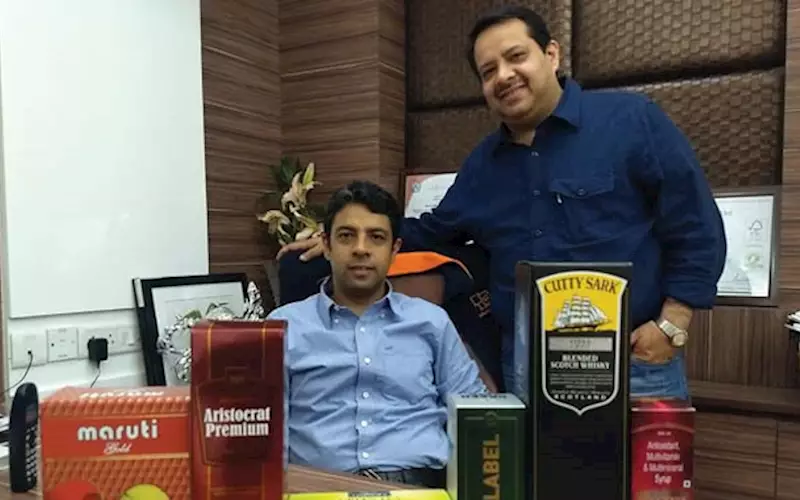Manesar-based Galaxy Offset is among the few printing companies which went for UV on its Heidelberg CD 102 LX seven-colour coater with extended delivery last year. The UV lamps and the entire UV system is manufactured by IST Metz and supplied along with the Heidelberg Press.
Installed at its production plant in Manesar, the seven-colour Heidelberg is equipped with six UV lamps (four interdeck and two at the end of the press).
Vikas Gulati, director-production, Galaxy Offset, says four interdeck lamps are movable and the two at end of the press are fixed. “We can dry double black and solid colours with the configuration. The requirement of UV lamps entirely depends on jobs,” he says.
The company usually runs five lamps but have the option for six. “We can manage the percentage of intensity of UV lamps according to the job requirement. Colour variation could happen if the intensities of the UV lamps go here and there,” he adds.
According to Gulati, in India, the intensity of lamps is managed by the experience and technical knowhow of the production staff.
However, he adds that as the Heidelberg is equipped with advanced features, the company can get all the details by retrieving the saved job.
“Information about the entire dryer setting, on what intensity the particular lamp was drying, details of substrates, among others, are easily available. We always go for features that suit our requirements and innovation, not costing. If we consider costing, then it will be hard to opt for advanced features,” he said. Galaxy does 60% of its total production on metPET, and Gulati says UV is essential for such kind of jobs.
The Heidelberg runs exclusively on UV. “We take two changeovers in one month and it is for two shifts. This is to give rest to our rollers. If we run UV all the time and for a long run, it may create problems,” he says, adding, changeover from UV to conventional and conventional to UV takes around two-hours.
Galaxy uses combi blankets which print around 70,000 on UV and more than 1,00,000 sheets on non-UV.
“Our UV solution enables us to print on polycarbonate, PP, PVC and other advanced substrates. With UV, we print more than 12,000 sheets an hour and we can print at the speed of 15,000 impressions an hour,” Gulati says, adding, “We do not work more than 15% of our capacity for any customer.”
He agrees that UV is power-intensive. If you compare the power consumption of our machine configuration with UV (approximately 250kw) and non-UV (approximately 120 kw), it’s almost double.
Galaxy has a six-colour Heidelberg machine fitted with IST Metz.
This doesn’t mean that Galaxy is looking at LED UV as an alternative. “There are some issues with particular colour of inks and multiple substrates in LED UV. Cost of ink is also on the higher side. Since it is a new technology it will take few years to get fully developed. It indicates that there are things which are not suitable.
At the same time, in LED, the biggest advantage is longer lamp life,” he says.











 See All
See All